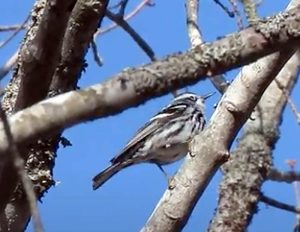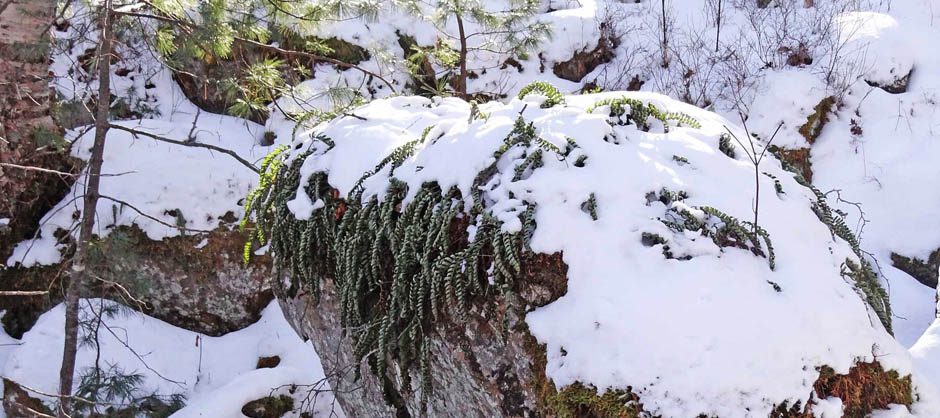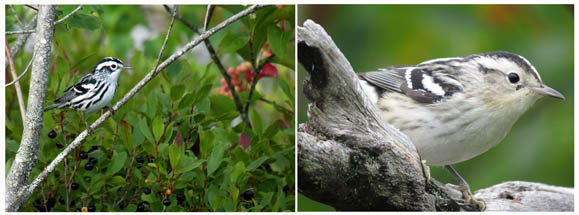Go To Ground-Nesting Birds 2024 for an Intro to this series & Links to other pages

Black & White Warbler in East-West Pine Islands Ponds area, May 18, 2023. Photo credits: Joshua Barss Dunham. Click on images for larger versions.
July 31, 2024
This summer our socials are, quite literally, going to the birds…
Ground nesting birds to be precise! Since March, we’ve been featuring 4 species that nest in the Backlands. Today we’re returning to the migratory Black-and-white Warbler:
The males arrive first and are territorial, chasing away other males and even other species! Listen carefully – these guys often return to the same territory year after year, so you may hear the exact same bird you heard last year.
Once the females arrive, it’s showtime for these males, perching & fluttering their wings as they try to attract a mate. And female Black-and-white Warblers don’t just take in the show – they’ve been known to lead a male to the edge of his territory, presumably to incite conflicts with neighbouring males to help determine which would make the better mate!
Females then take the lead in making a well-hidden nest on the ground where she’ll lay 4-6 tiny creamy white eggs with speckles of brown that will hatch in 10-12 days. Both parents feed and defend their young. The young leave the nest in only 8-12 more days, long before they are good fliers. First they use their wings to scuttle along the forest floor near the nest.
Help us ensure the safety of these young Black-and-white warblers as they test their wings – please keep your feet & your pets paws on the trail!
Want to learn more? Check the “gnd nesting” highlight in our profile, or find the whole series on our website (link in bio)
– The Bird Team: Joshua Barss Donham. Fulton Lavender, Cathy Smalley, Katie Studholme
May 17, 2024

Black-and-white Warbler, near West Pine Island Pond on May 18, 2023. View short Video 1 & short Video 2 Videos by Joshua Barss Donham
Have you heard a thin, high-pitched rocking sound like a squeaky wheel in the woods lately? The Black-and-white Warblers are back in town! Another ground nesting bird who kindly asks you to keep your feet on the trails for the summer.
These boldly striped warblers, sometimes nicknamed zebra warblers, are back from wintering in northern South America, Central America, and the southeastern US.
These are one of our earliest migrant warblers, typically arriving mid-May. Unlike other wood warblers, Black-and-white Warblers eat insects and spiders they find in the crevices of tree bark, so they don’t mind the lack of leaves on the trees. Black-and-white Warblers are uniquely adapted to these feeding habits, with an extra long rear toe and thicker legs that help them work their way up and down tree trunks and branches like a nuthatch or a creeper.
But they aren’t picky eaters – as the leaves come out, they’ll also feed among the leaves alongside other wood-warblers. If you’re bird-watching later in the season, this habit can make it easier to confuse Black-and-white Warblers with Blackpoll Warblers. the trick? Blackpolls sport a completely black cap, while Black-and-white Warblers have a white stripe on their crown.
In June we’ll be back with more about how Black-and-white warblers meet their mates & raise their families – follow us on Facebook, Instagram or Twitter so you don’t miss out!!
& Remember that it’s easy to help out ground nesting friends by keeping your feet & your dog’s feet on the trails from May – August.
– The Bird Team: Joshua Barss Donham. Fulton Lavender, Cathy Smalley, Katie Studholme


